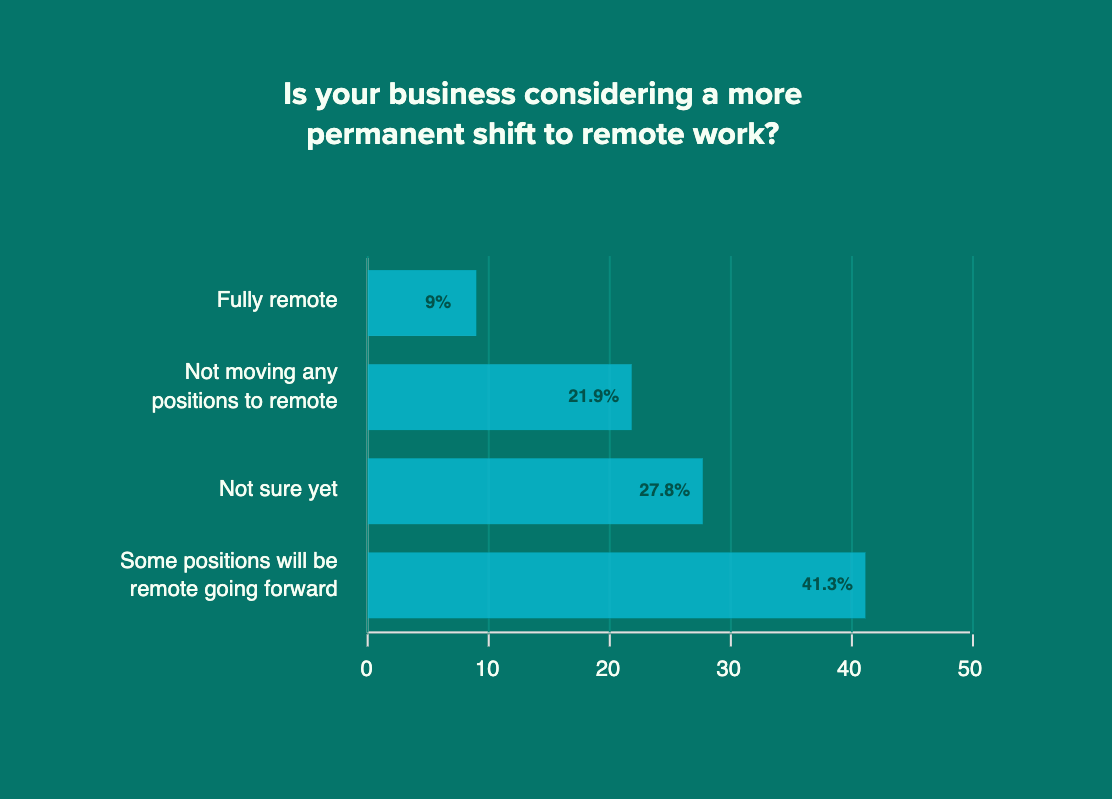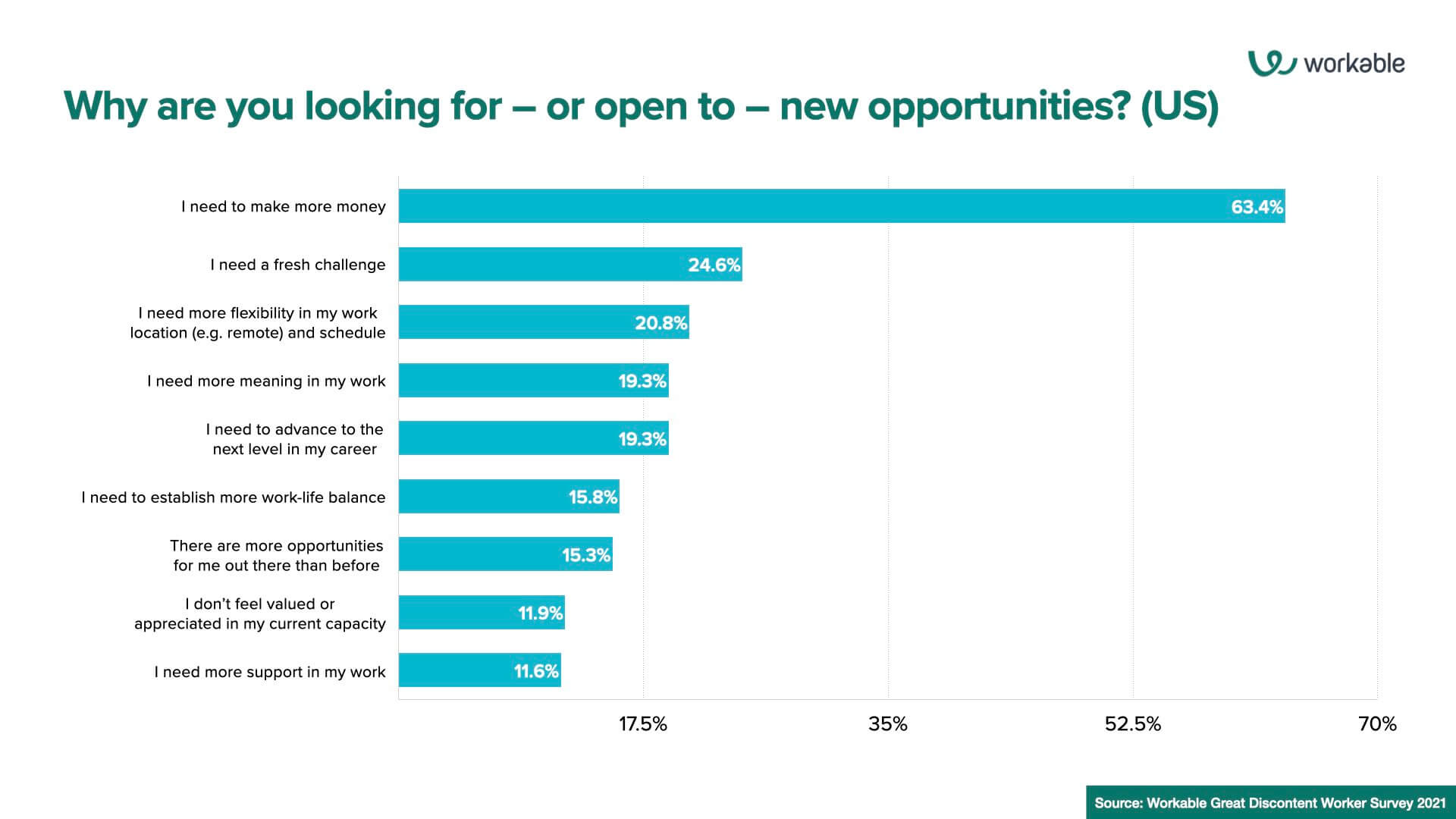Is the Great Resignation over? No – but you still have work to do
To have a clear understanding of the labor trend known as The Great Resignation, and how it continues to affect the workplace, you need to consider a variety of factors.

Many of these factors are related to the COVID-19 pandemic. Some predate the pandemic. Others, still, are just beginning to play out as the controls put in place by the pandemic are lifted.
How demographics played a role
In 2010, the earliest-born Baby Boomers were on the verge of retirement. In the decade that followed, 10,000 Boomers hit retirement age each day. This aging demographic contributed to a large number of resignations that overlapped with those that were inspired by the pandemic.
A population migration also led to an increase in resignations leading up to the pandemic. This involved people leaving areas known for high taxes or higher costs of living, such as San Francisco or New York City, and relocating to places like Florida or Texas to find lower taxes, a lower cost of living, or a more friendly business environment.
Whatever the reason for moving, these relocations often involved leaving a job behind to seek out a better one in a new area.
How COVID-19 played a role
The pandemic added new pressures to a wide range of industries, but none felt it as much as healthcare workers and technology workers. Throughout the pandemic, these industries saw many workers pushed to their limits.
The demands of caring for COVID patients – and ensuring that others were not introduced to the virus – kept healthcare professionals working non-stop, especially due to the lack of effective therapeutics for treating the conditions brought on by COVID.
In the IT world, professionals were called upon to create remote access environments that allowed businesses to continue their operations, despite the stay-in-place protocols prompted by the pandemic.
Not only did this require the creation of a new technology infrastructure, but IT workers also needed to provide support to a workforce that was suddenly faced with a wide range of new technology applications. The past two years have seen huge demands placed on technology professionals.
How remote offices played a role
While remote offices allowed work to continue during the pandemic, they also made work more stressful. Remote workers went from normal office settings with regular office hours to a work environment without boundaries. Some have described the new situation as living at work, instead of working from home.
Rather than meetings being limited to office hours, suddenly, they can happen 24 hours a day, seven days a week. When you work at an office, you can leave the office at a preset time. Even if you do not leave until seven o’clock or eight o’clock at night, you still eventually leave work and go home.
However, when you work from home, there is no “quitting time.” You could be getting phone calls at seven o’clock in the morning and you can be on Zoom meetings until eleven o’clock at night. In addition, you might find yourself in more meetings because your managers – who can no longer see your daily activity – want to keep tabs on your progress.
Many of the natural boundaries we had in place prior to the pandemic have disappeared because work and home are no longer two separate places. Being constantly on call and in meetings created a work overload that becomes too much for some people.
In addition, much of the socialization that occurred at work and helped in relieving stress no longer occurred. Working from home took away the opportunities to hang out by the printer or the coffee machine and talk to coworkers. Without the opportunities for socialization, you go from spending your days in a half-work, half-social environment to a whole-work environment.
This all adds to an already stressful working environment.
How new expectations played a role
Many of the media stories on the Great Resignation discussed workers using their time in lockdown to reevaluate their career goals. You start to see workers looking for different work situations as the controls put in place during the pandemic begin to lift. Instead of the short-term contract situations that are common in some industries, workers started searching for more meaningful long-term positions.
Another aspect of this reevaluation was the search for higher-paying jobs. For instance, in the hotel and food industries, a great reshuffling occurred in which people set out in search of better pay.
So, in addition to a migration from in-office jobs to work-from-home jobs, you also see a migration from lower-paying jobs to higher-paying jobs.
How the post-COVID environment is playing a role
Clearly, there were a wide range of factors that led to the phenomenon we have come to call the Great Resignation; but there are also new factors evolving with the potential to continue the trend.
The hyper-inflationary state that is affecting the economic environment in the US has put many organizations in a tight position. Organizations could make efforts to keep employees from leaving by increasing wages to keep up with the rate of inflation. Although, the increase in prices that would be needed to support this could contribute to runaway inflation and an even bigger problem for employees.
If organizations choose not to increase pay for their workers, then, in effect, they are giving their employees an 8-10% pay cut as a result of the current aggregate rates of inflation. That choice could easily result in many more people quitting their jobs and looking for better situations with better pay.
Another aspect of the post-pandemic environment is the move back to in-office workdays. While you might think this would be welcomed – especially considering the stresses of remote work described above – there is a growing fear that this could also result in more resignations.
Reports are showing that people are scared of returning to the office for a variety of reasons, including concerns about their health. As a result, a call back to offices could result in people quitting their jobs and looking for work that allows them to continue to work remotely.
Related: The Evil HR Lady offers insights on whether to return to office, remain remote, or do something in between.
Open the channels of conversation
For those tasked with managing the workplace in this challenging time, communication may be your best tool. If you keep an open dialogue with your employees, validating their concerns and committing to find solutions that can allow for your organization’s profitability, as well as their comfort, you can protect yourself from the negative impact that most resignations bring. In addition, you must understand that a lot has changed in the past few years.
Workers have new expectations, many of which are not unrealistic. Reversing the tide of the Great Resignation will require that everyone embrace a new normal.
Michael Gibbs is the CEO of Go Cloud Careers, a global organization that provides training for elite cloud computing careers. Go Cloud Careers is focused on helping individuals achieve their dream technology career by getting hired. Michael has 25 years of experience in networking, cloud computing, and IT security.






